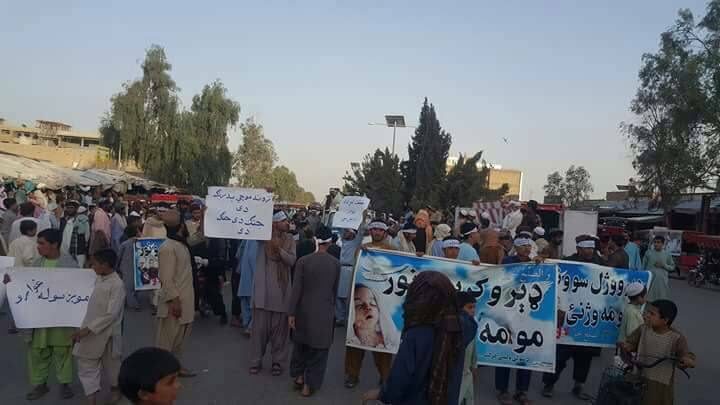By Roshni Kapur September 13, 2018
In May 2018, a group of seven Afghans in the mostly Taliban controlled province of Helmand set off on a more than 370-mile peace journey to the capital city, Kabul, sparking a nationwide movement.
Residents of Helmand have been paying a high price ever since the province turned into a battleground between Afghan forces and the Taliban. The catalyst for the peace march was a car bomb attack during a wrestling match in March that killed 14 people.
The protesters began with a hunger strike and a sit-in protest in the province’s capital, Lashkar Gah, within 24 hours of the suicide attack to demand an end to the violence. The activists held meetings with both the government and the Taliban, but when no results were produced they decided to walk to Kabul to further advocate for their peace message.
The war-weary Afghans traveled across the country, passing through difficult terrain in the scorching hot sun. The final leg of their march happened during the holy month of Ramadan, which they continued while observing their fast. They were welcomed in the villages which they passed through and were offered food, water and places to rest.
In total, they marched across six provinces, passing by Taliban-controlled areas. In the city of Ghazni, they were even warned by the Taliban not to enter an area because it would be dangerous. “We met Taliban fighters and, after an introduction, they told us we shouldn’t have come here because the area is planted with bombs, and they had planned an attack,” one of the protesters told The Telegraph. “After minutes of discussion with them, they seemed tired of it all, and the war. They directed us back to the safest area.”
Their tenacity and courage attracted around a hundred Afghans from places like Kandahar and Herat to join their peace movement, including women. The female protesters were asked to return home after protesting during the day, due to traditional sensitivities around spending nights on the roads. They reached Kabul when the ceasefire on Eid al-Fitr was just coming to an end in June. The protesters had covered over 370 miles by foot in a span of 40 days. They were given a warm greeting by Kabul residents who offered them food and water as well.
Despite being exhausted, the protesters were ready for their next phase of activism. They met Afghan President Ashraf Ghani and gave him a list of demands for sustainable peace. Some of the demands included hosting a place for peace talks, brokering a one-year ceasefire and launching a new mechanism that will look into the interests and needs of all Afghans. The protesters also formed a committee to reach out to the Taliban with a similar set of demands.
The activists then held sit-in protests outside the United Nations Assistance Mission in Afghanistan office and sent a letter to U.N. Secretary General Antonio Guterres, urging him to take a proactive approach towards the ongoing conflict in the country.
The group also strategically targeted key stakeholders and institutions, such as the American, British, Russian, Iranian and Pakistani embassies, which are perceived to have an external hand in the war. They held sit-ins for three days outside each of the embassies and plan to launch solidarity demonstrations in their home countries. “By holding our demonstrations, we want to create a relationship between our people and the citizens of those countries,” Bismillah Watandost, one of the protesters, told TOLO News. “And we hope the citizens of the foreign countries ask their governments why Afghans are protesting outside their embassies.”

After Kabul, the Helmand protesters carried on with their mission by walking barefoot another 340 miles to reach Mazar-e-Sharif from Aug. 10 to Sept. 11. Their purpose was to bring their message of peace to residents in northern Afghanistan. They also conducted dialogues with religious leaders, tribal elders and the general public in places where they stopped. The protesters had developed various strategies of persuasion and deterrence tailored to the different institutions they were engaging.










